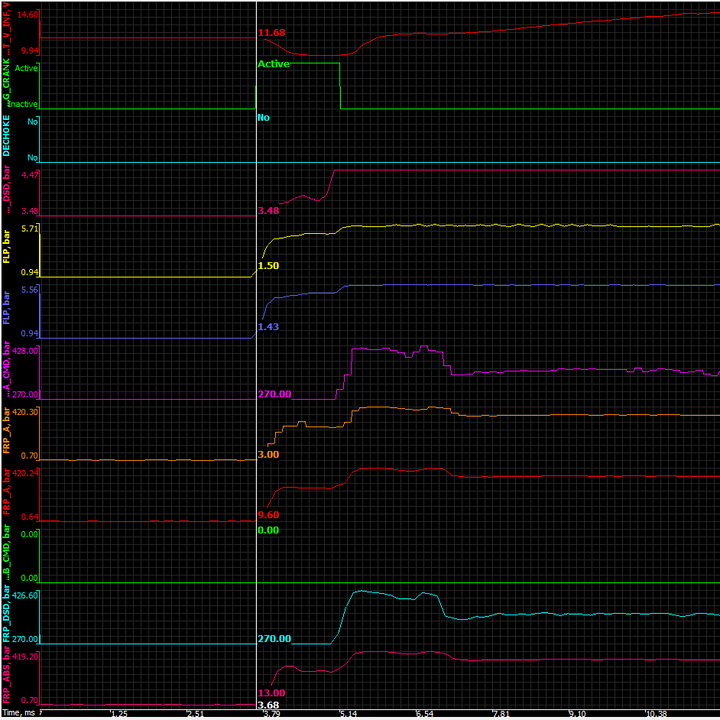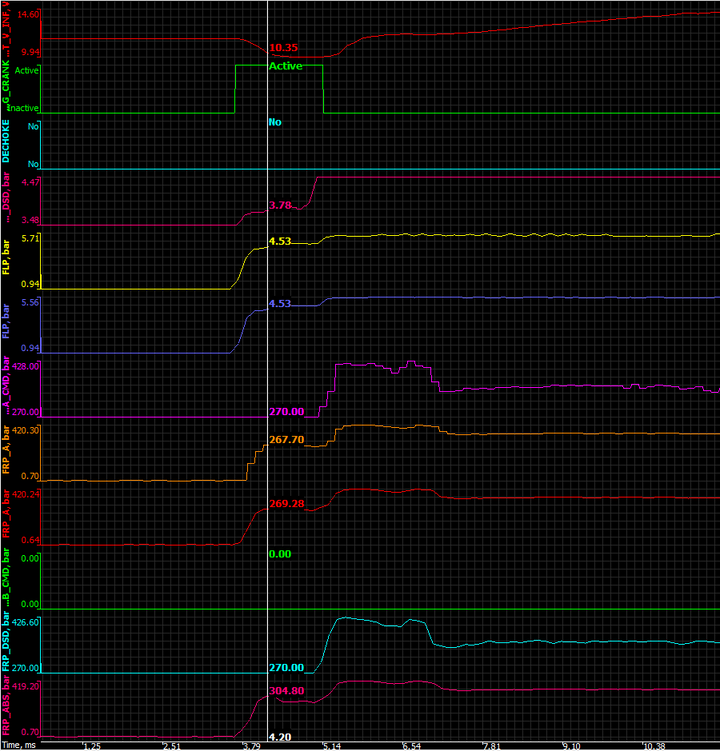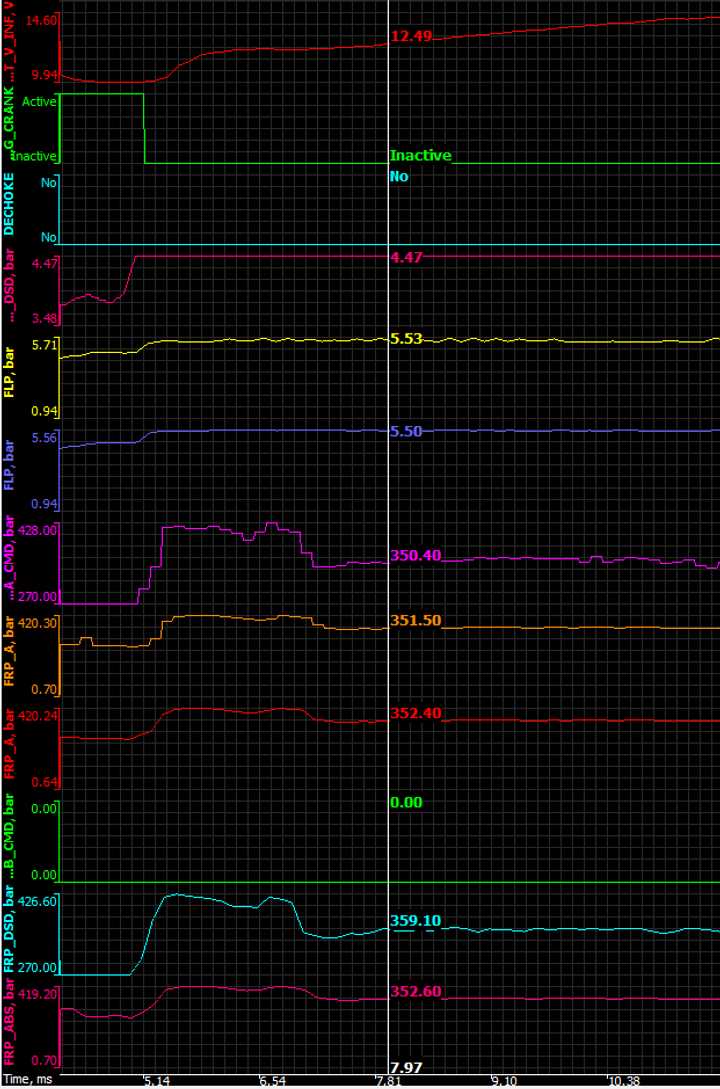Transit mk8 2.0d Extended Cranking When Cold
Discussion
When i try to start my van from cold (during 15c ambient so no glow plug light on the dash), it spins the engine over at normal speed but it struggles to fire for about 1-2 seconds before firing up. The cranking doesn't slow down. Then for the next 2-5 seconds it will run a little roughly. Not shaking the van or anything that bad, just a little rough. It will usually bong the alarm chime and flash up "Hill start assist not available" on the dashboard, then it'll right itself and run sweet as a nut. If i turn it off again within a minute or two of starting, the next start will also be sluggish but unlikely to have any error messages and just generally a little easier than the first cold start.
If i let it warm up before turning off, provided i come back to it and start it while it's still warm-ish (so within 30mins to 1hr), it will start right up perfectly, no extended cranking time, no warnings - just the perfect startup.
So in summary:
Low Voltage Fault: the hill start warning during cranking sounds like a low voltage issue to me. It's the original battery (4 years old), maybe it's not as enthusiastic as it once was and the extended cranks just show its age? I'm inclined to ignore this symptom.
Extended Cranking: made me think some kind of injector or fuel rail issue. I can hear the low pressure fuel pump as soon as i unlock the van and the van drives great, no lack of power even when cold. It's only when starting. That makes me think some kind of leak. The fact the van starts perfectly when warm makes me think there's a tiny leak somewhere that fuel pressure can escape only when cold, wherever the leak is, is expanding when warm?
I have forscan and a cable so i hooked it up to see what i could find. Of the available PIDs in PCM mode i chose all the fuel pressure relevant ones. Turns out i chose a bunch that don't matter for this case so there's extra line charts in the below screenshot that don't add anything and can be ignored.
Screenshot 1: Start of engine cranking - this data is all from a "2nd cold start".

Summary: High pressure fuel rail measuring much lower than the desired value - suggests high pressure fuel rail hasn't maintained pressure?

Screenshot 3: 1.5s from cranking start, cranking stops, the engine has caught (but roughly). High pressure rail is 30-60bar below desired depending on which trace you look at.

Screenshot 4: taken at an arbitrary time after engine is idling smoothly. High pressure rail is tracking desired and commanded values as expected.

So... it's time to go look at the engine. I did pop the bonnet and i didn't immediately spy the high pressure fuel rail but finding that and maybe it'll have some hard pipes to the injectors, i can check the nuts are all tight? Not sure, i'm sure i'll wing it and see... any pointers greatly appreciated!
If i let it warm up before turning off, provided i come back to it and start it while it's still warm-ish (so within 30mins to 1hr), it will start right up perfectly, no extended cranking time, no warnings - just the perfect startup.
So in summary:
- Cold start = extended cranking, accompanied with "hill start not available" message
- 2nd Cold start = extended cranking, no error messages
- Warm start = perfect start
- Hot start = perfect start
Low Voltage Fault: the hill start warning during cranking sounds like a low voltage issue to me. It's the original battery (4 years old), maybe it's not as enthusiastic as it once was and the extended cranks just show its age? I'm inclined to ignore this symptom.
Extended Cranking: made me think some kind of injector or fuel rail issue. I can hear the low pressure fuel pump as soon as i unlock the van and the van drives great, no lack of power even when cold. It's only when starting. That makes me think some kind of leak. The fact the van starts perfectly when warm makes me think there's a tiny leak somewhere that fuel pressure can escape only when cold, wherever the leak is, is expanding when warm?
I have forscan and a cable so i hooked it up to see what i could find. Of the available PIDs in PCM mode i chose all the fuel pressure relevant ones. Turns out i chose a bunch that don't matter for this case so there's extra line charts in the below screenshot that don't add anything and can be ignored.
Screenshot 1: Start of engine cranking - this data is all from a "2nd cold start".
Summary: High pressure fuel rail measuring much lower than the desired value - suggests high pressure fuel rail hasn't maintained pressure?
- System voltage is 11.68v, a little lower than ideal but i haven't actually used a multimeter to check the accuracy of this reading yet
- Cranking pid just so i could see in the graph when the key was on
- Dechoke - ignore
- FLP_DSD (pink) - i believe this is low pressure fuel rail, desired value. The help text in forscan says the desired pid represents what the ECU would expect to see given the values of the other pids. At this stage in the key on process, i'm ignoring this pid.
- FLP (yellow) - fuel rail (low pressure) measured value
- FLP (blue) - same as above but reads slightly differently? very minor difference, looks to be a lower resolution version of yellow? I.e. it changes when yellow changes so it's not a smoothed / moving average because there's no lag, but it's definitely smoother so i think forscan is applying some smoothing and it looks smoother becasue there's less data than yellow. all just a guess
- FRP_A_CMD (pink) - high pressure fuel rail commanded value, what the ECU wants, the value changes in discrete steps i see
- FRP_A (orange) - high pressure fuel rail measured value
- FRP_A (red) - same as above but much smoother
- FRP_B - not used, 4 cyl engine
- FRP_DSD - desired value for high pressure fuel rail
- FRP_ABS - absolute measured value (i.e. including ambient)
Screenshot 3: 1.5s from cranking start, cranking stops, the engine has caught (but roughly). High pressure rail is 30-60bar below desired depending on which trace you look at.
Screenshot 4: taken at an arbitrary time after engine is idling smoothly. High pressure rail is tracking desired and commanded values as expected.
So... it's time to go look at the engine. I did pop the bonnet and i didn't immediately spy the high pressure fuel rail but finding that and maybe it'll have some hard pipes to the injectors, i can check the nuts are all tight? Not sure, i'm sure i'll wing it and see... any pointers greatly appreciated!
General pointers.
11.68 is basically pretty flat.
12.6/7v is a well charged healthy battery, every 0.1 volt under that is a loss of around 15% charge.
As you intimate, low pressure at the rail implies a leak, if it is an injector beware that could be into the engine when it is stopped, so check your oil for diesel.
11.68 is basically pretty flat.
12.6/7v is a well charged healthy battery, every 0.1 volt under that is a loss of around 15% charge.
As you intimate, low pressure at the rail implies a leak, if it is an injector beware that could be into the engine when it is stopped, so check your oil for diesel.
Thanks for that
I’m not sure how it derives that voltage but I didn’t trust it and just ignored it at the time because the starter motor sounds too strong to believe that figure. What I should have done instead of just assuming the figure was spurious was go get the DMM!
So I hooked up the DMM just now and it’s showing 12.3 but that’s with the low pressure fuel pump running (couldn’t be bothered waiting for it to time out!).

I think the battery is on its 2nd half of life but I don’t think it needs replacing yet. Just to be sure I’ve got it on charge overnight to see if there’s any difference cranking in the morning.
I’ll need to see if I can figure out why the ecu’s derived voltage isn’t accurate though, I’ll bet that’ll play havoc with some subsystem or other if left unchecked! Last thing I need is immobilizer or whatever issues!!
I’m not sure how it derives that voltage but I didn’t trust it and just ignored it at the time because the starter motor sounds too strong to believe that figure. What I should have done instead of just assuming the figure was spurious was go get the DMM!
So I hooked up the DMM just now and it’s showing 12.3 but that’s with the low pressure fuel pump running (couldn’t be bothered waiting for it to time out!).
I think the battery is on its 2nd half of life but I don’t think it needs replacing yet. Just to be sure I’ve got it on charge overnight to see if there’s any difference cranking in the morning.
I’ll need to see if I can figure out why the ecu’s derived voltage isn’t accurate though, I’ll bet that’ll play havoc with some subsystem or other if left unchecked! Last thing I need is immobilizer or whatever issues!!
9.96V at the end of Crank, that's very low.
Many ECUs start to shutdown pretty close to that value. Quite a few of the Voltage compensation tables within the mapping would have clipped out at that Voltage as well.
The fact it struggles on a restart after not running for very long, combined with "Hill start assist not available" (assume electric Handbrake) aligns with things clipping due to a Low Voltage scenario.
The reason it'll start happily when warn is that the internal engine friction will be exponentially lower than during a Cold Start (check out oil viscosity curves). More friction = more current demand from the starter.
Also, any other electrical fluid pumps and the auto Glow Plugs (hence you rarely, if ever seen a Glow Plug light these days), which will likely activate when you unlock the car depending on engine temp, will be pulling that Voltage down as well.
Many ECUs start to shutdown pretty close to that value. Quite a few of the Voltage compensation tables within the mapping would have clipped out at that Voltage as well.
The fact it struggles on a restart after not running for very long, combined with "Hill start assist not available" (assume electric Handbrake) aligns with things clipping due to a Low Voltage scenario.
The reason it'll start happily when warn is that the internal engine friction will be exponentially lower than during a Cold Start (check out oil viscosity curves). More friction = more current demand from the starter.
Also, any other electrical fluid pumps and the auto Glow Plugs (hence you rarely, if ever seen a Glow Plug light these days), which will likely activate when you unlock the car depending on engine temp, will be pulling that Voltage down as well.
A couple of seconds isn’t so bad, especially for one of these rather poor engines.
If it kicks in immediately as the fuel pressure rises to 200+ bar then you can probably ignore the following but a known issue for these engines is poor cold start due to compression loss. The compression loss is caused by the heads snapping on some of the head bolts! Sounds unbelievable but I have seen them where they will crank for 30s+ before they kick in then chugg for a couple of seconds and then start/run fine all day.
In this case it will reach proper fuel pressure and just keep cranking.
If it kicks in immediately as the fuel pressure rises to 200+ bar then you can probably ignore the following but a known issue for these engines is poor cold start due to compression loss. The compression loss is caused by the heads snapping on some of the head bolts! Sounds unbelievable but I have seen them where they will crank for 30s+ before they kick in then chugg for a couple of seconds and then start/run fine all day.
In this case it will reach proper fuel pressure and just keep cranking.
Gassing Station | Engines & Drivetrain | Top of Page | What's New | My Stuff




